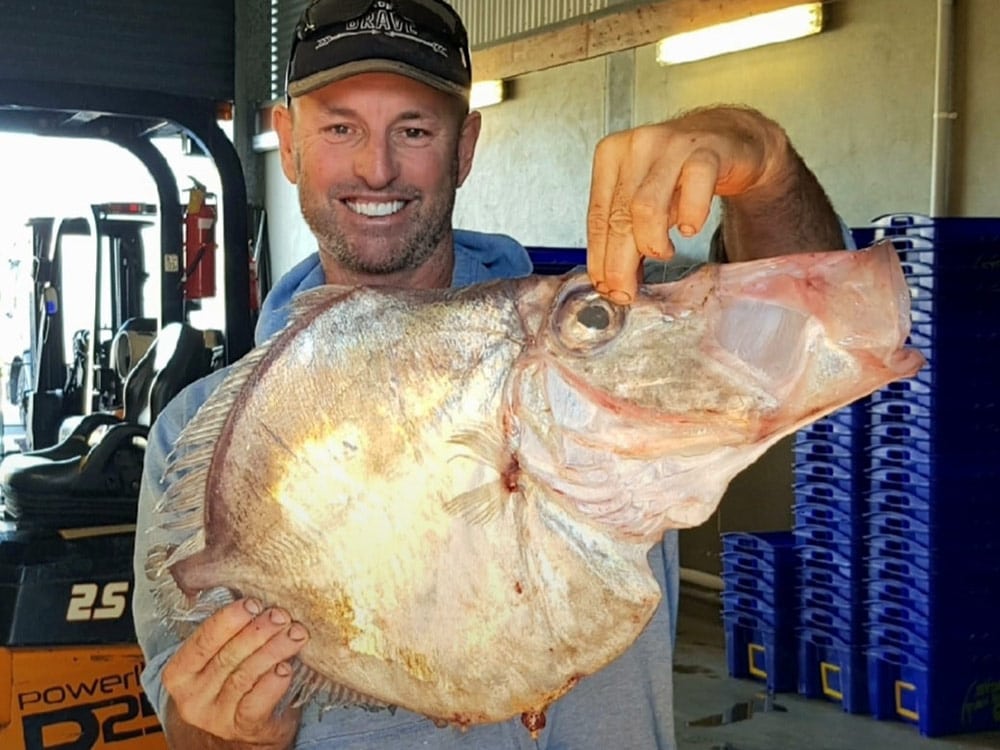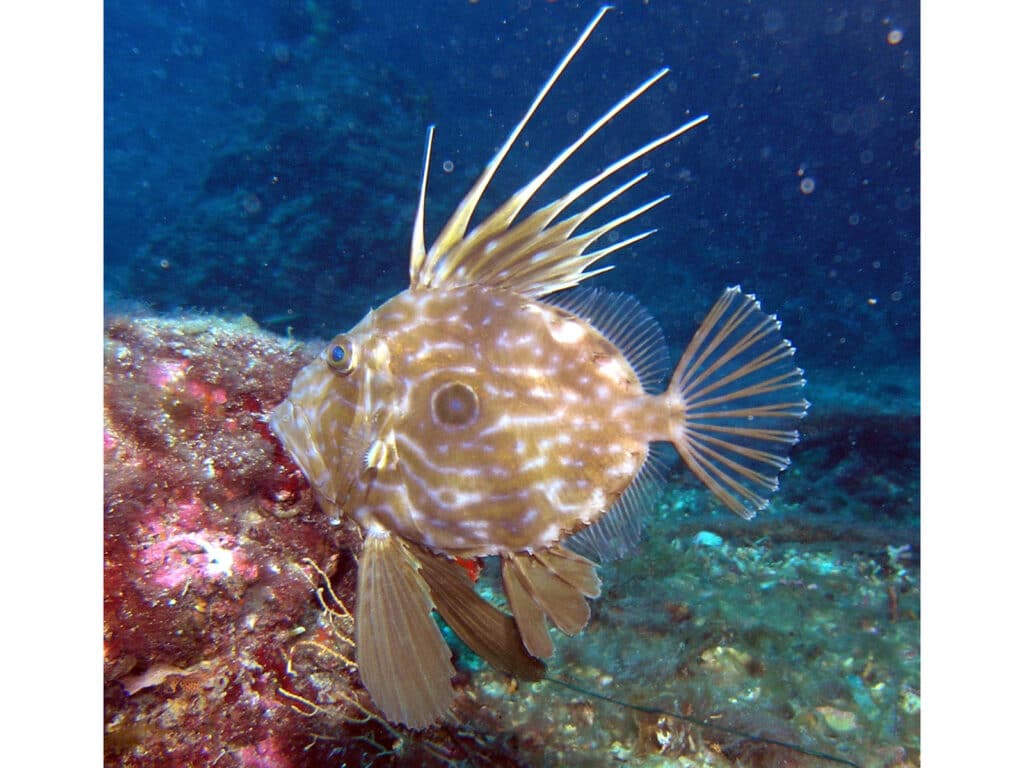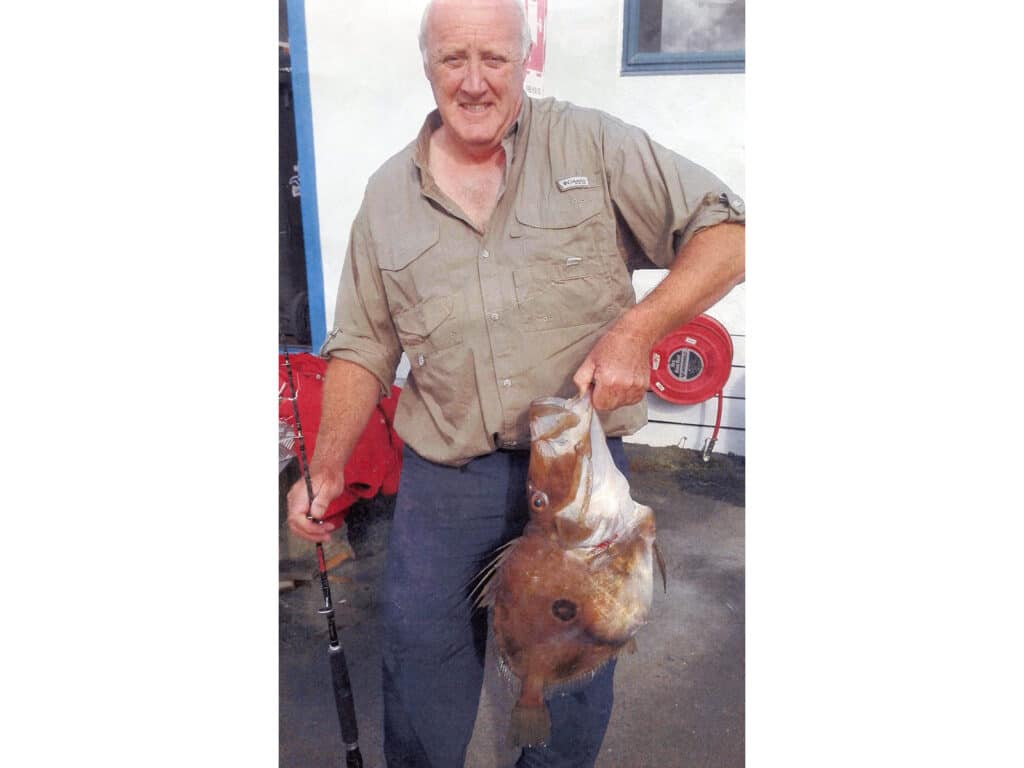
While commonly taken by anglers in some regions, many are unfamiliar with the John Dory (Zeus faber). But the distinctive appearance of this strange fish make it tough to confuse with other species.
There are only a few species of dories in the world, by far the most common and important species being the John Dory (and, no, I could find no credible attribution for the odd name). It’s found around the coasts of Africa, Southeast Asia, Australia and New Zealand, and areas of Europe. John Dorys are laterally compressed — in shape rather like a lookdown — with deep bodies and large heads. Generally brownish, a very large black “eye spot” at the center of each side is a unique characteristic.
Particularly striking is the mouth, at least when fully extended. Then one realizes how huge it is — an oversized, long protrusible tube. That allows it to fin slowly near a fish and vacuum it in, as seen this video — but don’t blink at the wrong times or you’ll miss the moves.

Its super-narrow profile bring its eyes close enough together to give the John Dory the binocular vision that many fish (with broader heads) lack, allowing it to track and judge distance to prey just in front of it.
John Dory can be found from 15 or 20 feet out to several hundred, and while they do hang out at times over smooth bottoms, they tend to prefer the structure of reefs and rocky areas. Here, anglers can target them with small live baits or soft plastics. Just avoid rearing back to set hooks (if not using circle hooks) since their soft mouths tear rather easily.

Why do anglers target these fish? Simply, they’re prized as topnotch table fare. They’re important commercially in areas, as well. A good one is a few pounds; the IGFA all-tackle world record stands at 9 pounds, 1 ounce, from Mercury Bay, New Zealand, in 2016.









